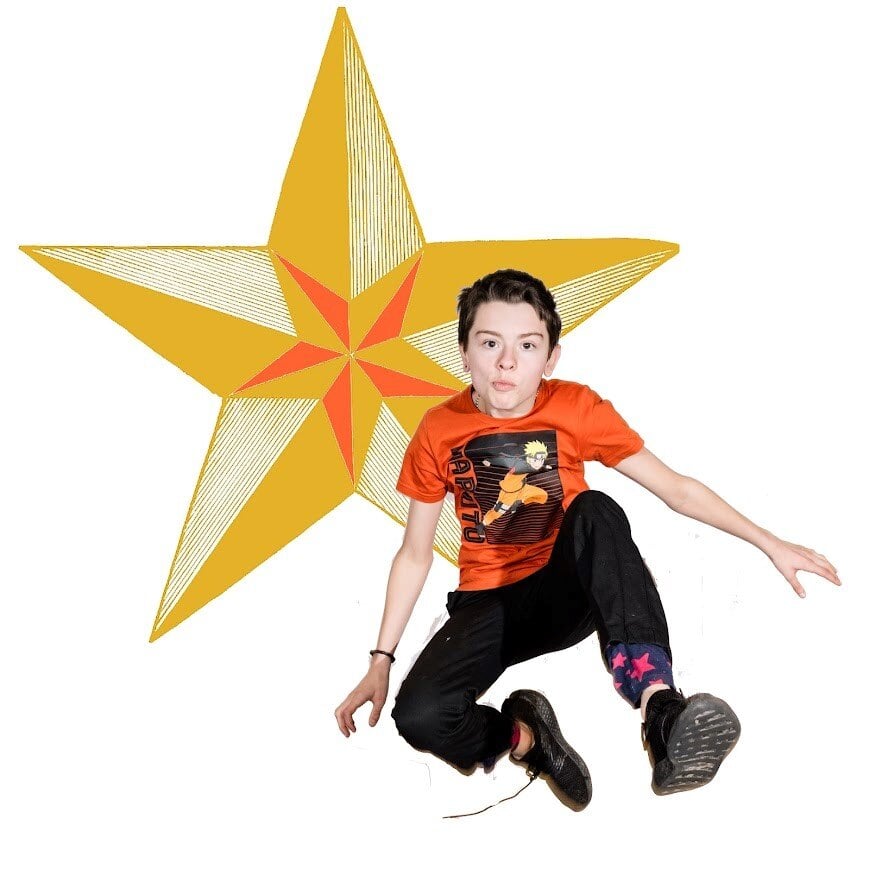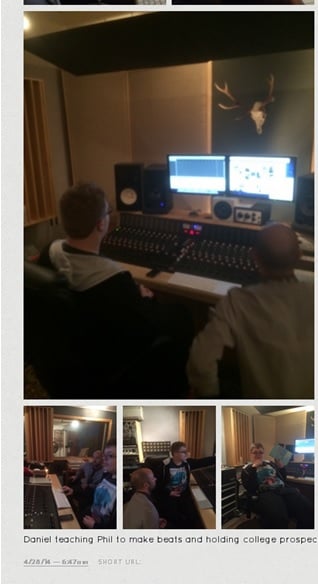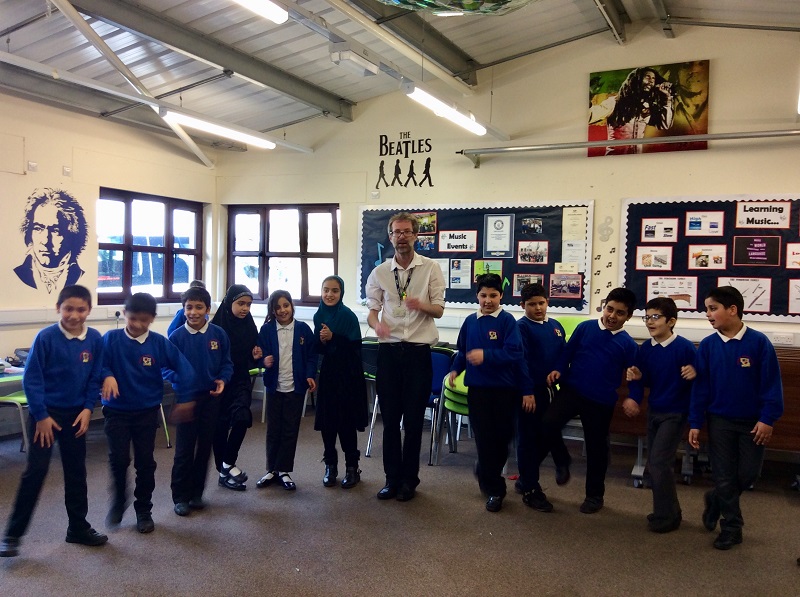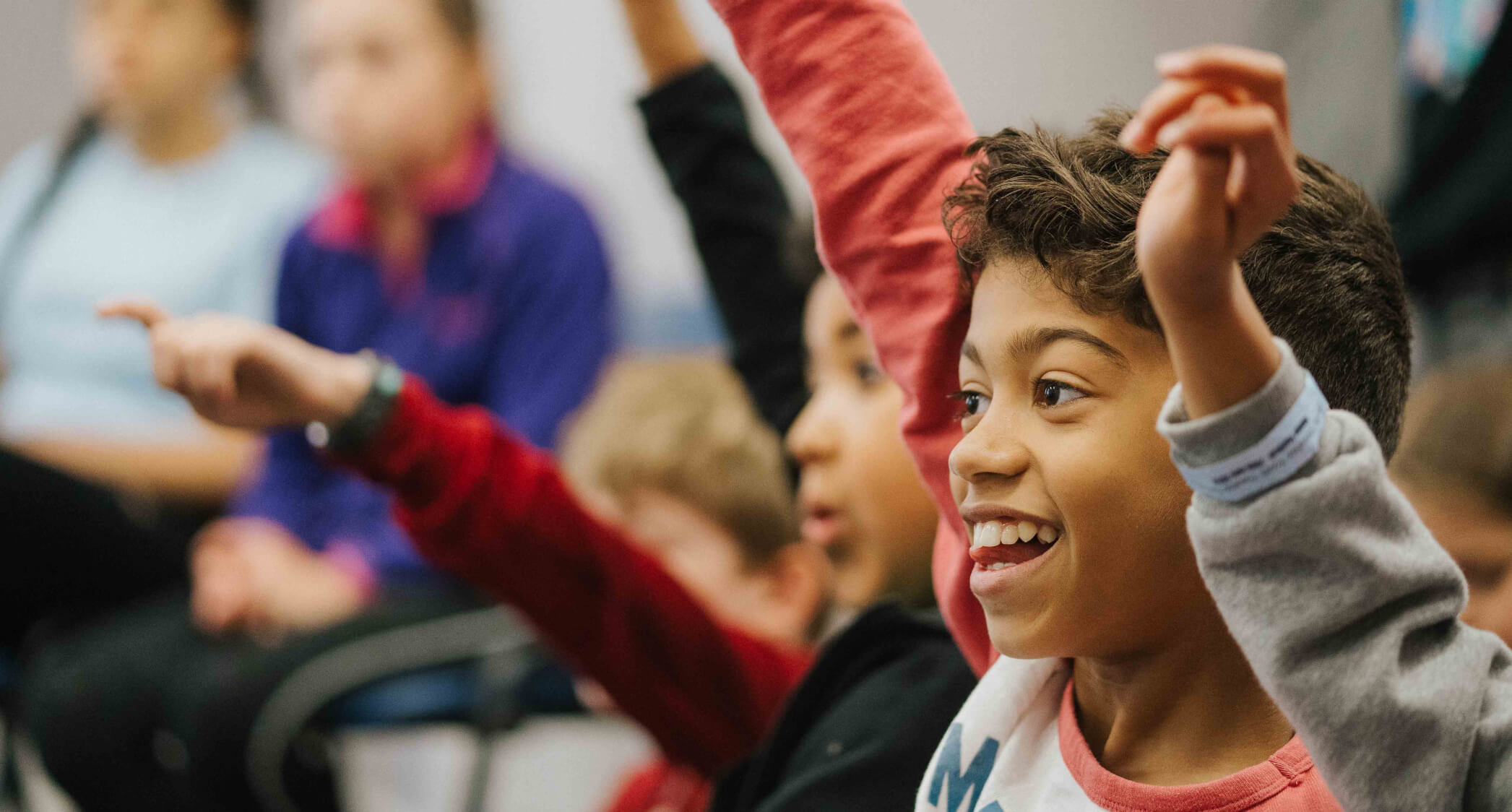
Arts Award empowering creativity for young people with SEN
BY: Guest Writer
20 Jan 2025
On the blog this week, David McKenna, Course Leader for Expressive Arts at ALP Nuneaton (Alternative Learning Provision) shares his journey of implementing Arts Award at his setting and how it has had such a transformative impact on their young people.
ALP Schools are a chain of Independent Special Needs Schools. ALP Nuneaton caters for 50 young people aged between 6 and 19 who have struggled in mainstream education due to their special educational needs.
Our unique selling point is that we offer small classes or one to one learning where the curriculum is tailored to the needs of the individual. We also recognise the importance of building up routines, relationships, respect and trust in order to achieve successful teaching and learning.
Since starting our Arts Award delivery in September 2023, I’ve witnessed how it not only enables our young people to achieve accreditation for their hard work, but it also enriches their creative experiences in dance, drama and other arts.
When I joined ALP Nuneaton, I was eager to create meaningful learning experiences for our learners with complex needs. Having taught Arts Award previously as a self-employed artist, I recognised its potential to empower our learners. It provides a framework that allows learners to achieve a recognised qualification as a result of engaging in creative projects tailored to their individual abilities, which showcase their talents in dance, drama, visual arts and other learner chosen art forms.
Our intake of learners ranges in age from 6 to 19 years, encompassing a variety of complex needs, including autism, emotional and behavioural difficulties. To accommodate this diverse cohort I deliver the Discover, Explore and Bronze levels so learners can engage with the material at their own level fostering both personal growth and a sense of achievement.
Access Fund
The establishment of Arts Award at the school was made possible through our commitment to offering a rich arts curriculum. By leveraging an Arts Award Access Fund grant, we were able to bring in professional artists who provided unique opportunities such as photography, graffiti and music composition; linking these experiences to our core subjects of dance, drama and visual arts. The support from our senior leadership team has been instrumental in expanding our arts provision with a shared vision of enabling our learners to thrive creatively and celebrate their achievements.
Our first year of delivering Arts Award was a resounding success with all 32 learners achieving the qualification (at either Discover, Explore or Bronze level). I believe this is down to planning and building a programme based around our learners’ preferences. This builds the excitement before you have even begun, and the children really look forward to engaging in the activities they’ve chosen.
Arts activities
To kick off our Arts Award project we empowered our learners by allowing them to choose from a variety of art forms like dance, drama, music, pottery, visual art, photography, film and graffiti based on their personal interests. To help guide their choices we created learner-specific handouts using Widgit symbols as visual aids making it easier for all students, including those with communication challenges to understand and engage with the options available. This approach allowed students to express their preferences by circling their chosen art forms, ensuring they had agency in the decision-making process. After reviewing their choices, we identified the most popular art forms (dance, drama, music and graffiti) and moved forward with collaborative planning where learners could begin developing their projects based on the art forms they felt most passionate about.
Our young people participated in various arts activities for Part A of Discover, Explore and Bronze. In November 2023 we invited photographer Jenny Harper to the school for a full day of dance and movement photography. This unique experience allowed our learners to express themselves physically while capturing their creativity on camera. The resulting photos were then enhanced by our dance teacher using Photoshop, creating stunning images themed ‘Reaching for the stars’.
In April 2024 Alisha and Nathan from Grit Arts visited our school to introduce spray painting techniques. Working with the entire cohort of learners, they created four graffiti boards all centred on the same theme of ‘Reach for the stars’, tying in with the previous works. The theme fitted into the ethos of our school where we aim for each child to reach their full potential.
Artist research
As part of our Arts Award journey, we embarked on a creative and enriching exploration that combined research, collaboration and first-hand experience. The aim was to give our learners a deeper understanding of an artist’s life and work while also providing the opportunity to experience live performance. For this we focused on the life and legacy of Jackson Pollock the renowned abstract expressionist painter and Motionhouse’s Starchitects, an exciting children’s performance that combines dance and circus skills.
Research is a core component of Arts Award. It encourages learners to delve into the lives and works of artists and arts organisations and develop their ability to reflect and express their thoughts. To make this an engaging and accessible experience for our learners I decided to lead the research by selecting a specific artist and performance that could be enjoyed as a shared experience.
We began by exploring the life and works of Jackson Pollock through a PowerPoint presentation. The presentation gave an overview of Pollock’s biography showcasing some of his most famous works like No. 5, 1948 and Convergence, while also explaining his innovative approach to painting. We discussed how Pollock used techniques such as drip painting where the paint is poured or dripped onto the canvas in a spontaneous and unplanned way. We explained that this was deeply connected to Pollock’s emotions and psyche making his work not only visually striking but also deeply personal.
To deepen the learners’ engagement with Pollock’s artistic methods we decided to recreate his creative process together. As a school we collaborated to create three large-scale paintings. From Year 1 to Year 10 each class contributed their ideas and creativity to the paintings - experimenting with the spontaneous, energetic style that Pollock was famous for. Using different materials like paint, sponges and brushes the students were encouraged to freely express themselves on the canvas much like Pollock did on his own giant works of art.
Once completed, these three large paintings were proudly displayed during an assembly. Each learner took turns presenting their work and sharing their thoughts about Pollock’s techniques. The assembly gave learners the chance to discuss their discoveries and reflect on what they had learned about Pollock’s life, his distinctive style and his contributions to modern art.
Being an audience member and researching arts organisations
In addition to exploring visual arts all students also had the opportunity to experience the magic of live performance. We chose to attend a children’s show Starkitecks by the renowned dance company Motionhouse at the Midlands Arts Centre in Birmingham. This immersive performance uses dynamic dance, circus skills and cutting-edge projection technology to tell a captivating story about saving Santa.
Before the performance the learners researched the Motionhouse company. They used online resources to find out about the company’s history, the creative minds behind it and the style of performance they were going to see. To help them engage with the research the students completed a Widgit handout about the company which encouraged them to think critically about the artistic processes involved in creating a live performance.
After watching Starchitects the students were invited to reflect on the experience and write about it using their Widgit handouts again. They were asked to consider elements such as the story, the performance styles, the lighting and the use of technology. The students shared their thoughts in discussions and expressed how the performance made them feel. This exercise helped them articulate their personal reactions to the performance and connect it to their broader understanding of art.
Throughout this process the learners not only explored the lives of famous artists like Pollock and experienced a live performance, but they also built confidence in their ability to research, express opinions and discuss art in a meaningful way. The activities encouraged teamwork and creativity while fostering a greater appreciation for both visual arts and live performances. By the end of the project students were able to confidently share their insights and discoveries with their peers, further developing their communication and presentation skills.
Young person-centred approach
A central tenet of our Arts Award delivery is the emphasis on agency in the creative process. It was crucial that our learners had the opportunity to choose their preferred arts disciplines and actively engage in creating their own work.
For instance, during our photography sessions with Jenny Harper, learners not only participated in the dance but also had input in choosing camera angles that best represented their movement. In our graffiti workshops with Grit Arts, learners decided on colours, shapes and themes, empowering them to leave their mark through their artistic choices.
Given the broad range of needs within our cohort from pre-verbal 4 year olds to 15 year olds with emotional and behavioural challenges, it was crucial to tailor the experience to the appropriate level for each student whether that was Discover, Explore, or Bronze. To ensure each learner was supported effectively we conducted baseline assessments to evaluate their engagement, reading and writing levels. This allowed us to select the level that best suited each individual, ensuring an inclusive and meaningful experience for all.
Communication aids
Communication is key when working with children with SEN. Enabling learners to express their thoughts, feelings, and reflections is vital for their Arts Award portfolios. To support this, I focus on providing the right communication aids. Here are some considerations for enhancing communication:
- Visual aids: Using methods such as Widgit symbols and visual supports helps learners engage more effectively. These tools can clarify concepts and provide prompts for reflection.
- SEN-friendly approaches: Tailoring teaching strategies to be inclusive is crucial. This might involve simplifying language or using interactive resources that appeal to various learning styles.
- Collaboration with specialists: Engaging with professionals such as the SENCo, Occupational Therapists (OT), and Speech and Language Therapists (SALT) can help create communication aids suited for learners with complex needs.
By prioritising effective communication, we ensure that every learner can contribute meaningfully to their Arts Award portfolio, fostering a sense of belonging and accomplishment.
Impact
Arts Award has significantly impacted our organisation, enhancing our commitment to arts education and allowing us to better support our learners in achieving meaningful qualifications. It has also fostered a greater sense of community within our school, as learners collaborate and share their creative journeys.
For our learners, Arts Award has opened doors to new artistic experiences and skills. They have developed confidence, social skills and a sense of achievement as they engage in creative expression. Many learners have discovered new passions contributing to their personal growth and preparing them for life beyond our school.
Flexibility
Working in an SEN school, no two learners have the same needs and every day presents unique challenges. The flexible nature of Arts Award allows us to tailor our approach to meet individual needs and enable learners to work at their own pace. This adaptability is crucial in fostering an inclusive environment where all learners can thrive.
I recommend maintaining a portfolio document for each learner. This document should include photographs of activities, reflections, and thoughts from the learners. For any video evidence, consider creating links or QR codes that connect directly to the content. This way, if your centre is selected for moderation, the moderator can easily access and see which elements of Arts Award each piece relates to.
To learn more about ALP Schools and our commitment to arts education visit our website here. Together we can empower our learners to reach for the stars and achieve their creative ambitions.




Comments & Replies